March is Endometriosis Awareness Month!
An estimated 176 million women have endometriosis worldwide. I have Stage III endometriosis diagnosed via laparoscopic surgery. It is a disease for which I feel like I have little to no control. There is currently no cure and treatments focus on alleviating the painful symptoms. Before I had surgery, it felt like I spent too much time waiting to have good days and simultaneously doing my best to push through the bad ones.
When I was first diagnosed, I did a lot of research on how to naturally manage endometriosis symptoms. Most sources pointed to clean eating, increased exercise, and pregnancy as potential solutions. Studies even claim that if you are extremely active and exercise a lot, you can reduce your endometriosis or prevent it from occurring in the first place. This wasn’t my experience, as I was very active in my younger years and still developed severe endometriosis. But, it gave me some hope that I could reclaim my life and reduce my symptoms.
It sounded so easy; increase my exercise and I’ll feel better, right? For me, exercising has been a long, complicated road. When my pain and bleeding were at its worse, I wasn’t exercising at all. Since my surgery and throughout the following years, I have struggled to maintain consistency in my workouts and tend to tire more easily. I have also experienced pain and bloating for days after a high intensity workout. This has led me to avoid intense workouts all together. At times, it has left me feeling deflated, uninspired, and frustrated.
However, I keep trying new things and experimenting with different exercise plans. I know how important it is to stay in shape for my physical and mental health. I hope that it is helping my endometriosis, but I really have no way of knowing. I still experience bad days and some months are better/worse than others, but I have been met with positive results through diligence and patience.
Here are some tips that have helped me throughout my fitness journey with severe endometriosis.
1) Start with Walking I have tried all sorts of exercises throughout the years: running, yoga, pilates, walking, hiking, and calisthenics. Brisk walking has been the best, most consistent cardio for me. It gets the blood flowing and I have increased my stamina slowly and steadily. On tough days, I opt for a shorter, slower walk. Doing something is usually better than doing nothing, but if you are in extreme pain, stop exercising and know you can always try again tomorrow.
2) Schedule More Rigorous Work Outs as Soon as Your Period Ends (or when the cramps, pain, and bleeding lessens toward the end of your period.) I have more energy and stamina toward the end of my period until about a week before my next period starts. There are usually some challenging days mixed in there (especially during ovulation time), but, for the most part, I try and use my energetic days wisely. I focus on muscle toning, weight bearing exercises, and other forms of exercise I normally refrain from on painful days.
3) Be Prepared for Setbacks I can’t stress enough that you will face obstacles. Due to the unpredictable nature of endometriosis pain, it makes it difficult to stick to a rigid schedule. You need to be flexible with your workouts and be kind to your body. In the past, I have made the mistake of trying to adhere to a rigid, rigorous workout schedule. I set myself up for failure, I get discouraged, and it takes me longer to get back on the horse again.
4) Practice Self-Acceptance I am trying to become more accepting and loving of my body. In my younger years, my main workout motivation was to look better in my jeans. I was impatient and easily distracted, and tended to get bored if I didn’t see quick results. Of course, I would love to look good, but it’s not my main focus anymore. I focus instead on feeling stronger, healthier, and gaining endurance.
5) Monitor Your Diet Watch what you eat before and after exercising. For me, gastrointestinal issues are usually at a high after I work out. If I have been eating greasy, heavy foods, it has an effect on how I feel during and after my workout sessions. I try and snack on a banana, apple sauce, or string cheese about twenty to thirty minutes before I start exercising to increase energy but keep bloating and gas to a minimum.
What are your tips for exercising with endometriosis?
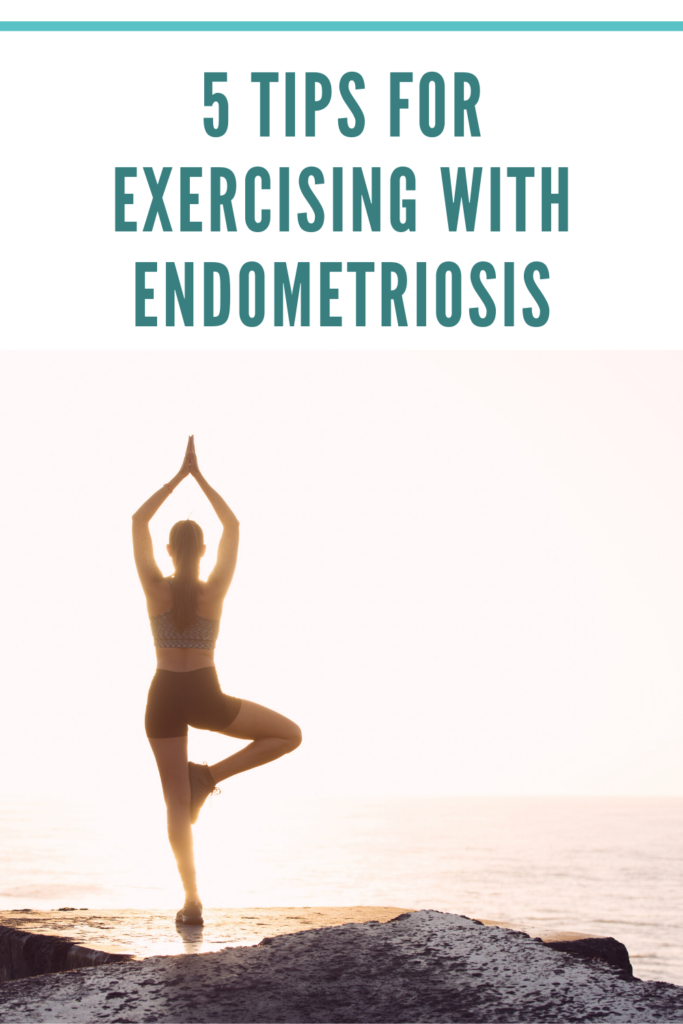
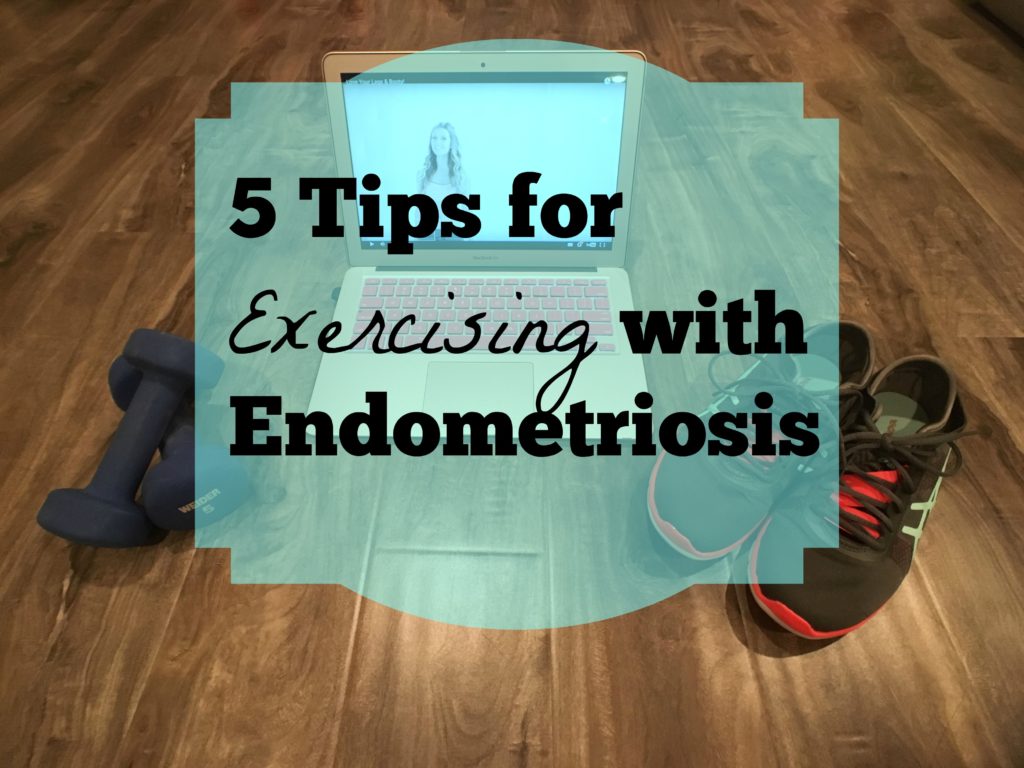
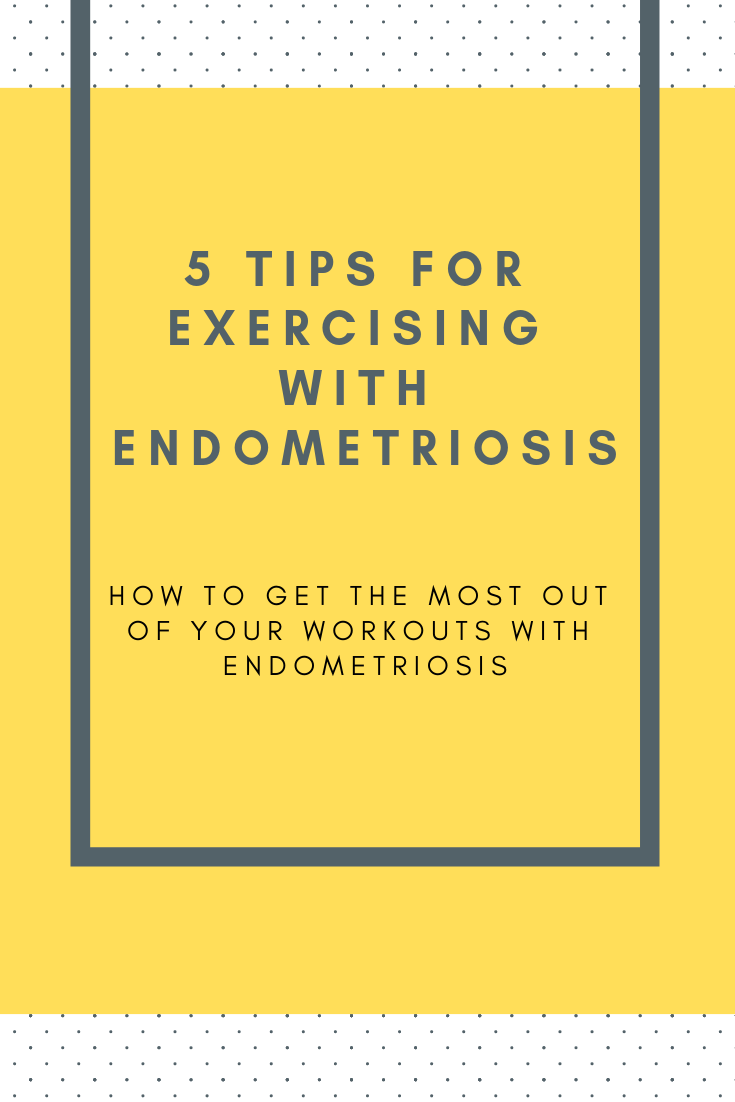

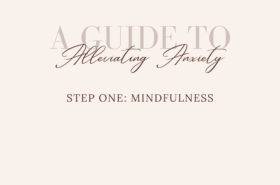
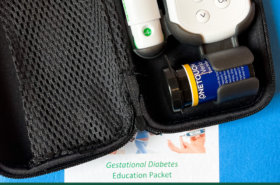
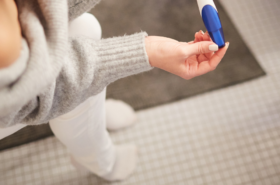
Natalie Mostert
Hi there.
Thank you for your blog on this topic. Creating awareness of this illness is SO important. I was misdiagnosed for many years! I'm a stage 4 Endometriosis suffer.
When I was first diagnosed (also via a Laparoscopy), I was bleeding internally and the Endometriosis was growing on all my organs; bladder, colon, rectum, diaphragm etc.
I've been for 7 surgeries in the past 6 years. My Endometriosis is extremely aggressive, but I'm very glad to say that after a challenging 10 years and an extremely good doctor, I'm now healthier than I have been in quite some time. My last surgery was last year March. (#happiness #grateful)
During my worst years, unfortunately my bleeding and pain wasn't centered only during my period or ovulation time… It was there ALL the time… Wearing sanitary towels EVERY day (tampons was totally impossible), also had its own challenges. Also the medication I was on faught the Endometriosis wonderfully, but it lowered my bone density and my muscles and joints were in constant pain. I was tired all the time, but couldn't sleep. Etc. Etc. Etc.
Eating healthy definitely helped. I had to cut out all processed foods, gluten, preservatives, etc., as I too have bowel issues after so many surgeries. Scar tissue in itself created new problems.
I was an athlete my whole life. I played different sports, Singing, acting, dancing etc. So when I first got diagnosed, I "had to" find some exercise routine. I tried aerobics, spinning, cross-fit, yoga, pilates, you name it. But any type of exercise, high impact, low impact or no impact, left me stiff and in pain (Endometriosis pain & joint and muscle pain) for WEEKS on end. And that only after 1 workout session. Hanging up washing left me in pain.
I became extremely despondent and my specialist advised me to also just start walking. He reminded me that yes, exercise is important, but I should not forget about what was done to my insides. Because surgeries are laparoscopic, you tend to forget that although you can't see the scars, major surgery was done. And major surgery leaves Scar tissue.
So… That was basically the only exercise I could do. Walking. It only left me in pain for a day or two.
From my experience, every Endometriosis case is individual. My sister has now recently been diagnosed (and she already has two kids!) and she has different challenges to what I have. So in my opinion, an important thing to remember with exercise, is LISTEN TO YOUR BODY. Don't push it. And accept it if you can't do something you used to do so easily before. Acceptance of your diagnosis and understanding the illness is the first step towards dealing, coping and living with it. The importance on LIVING!!! If walking is all you can do, it's still exercise. So ENJOY it!
Thx for your blog!